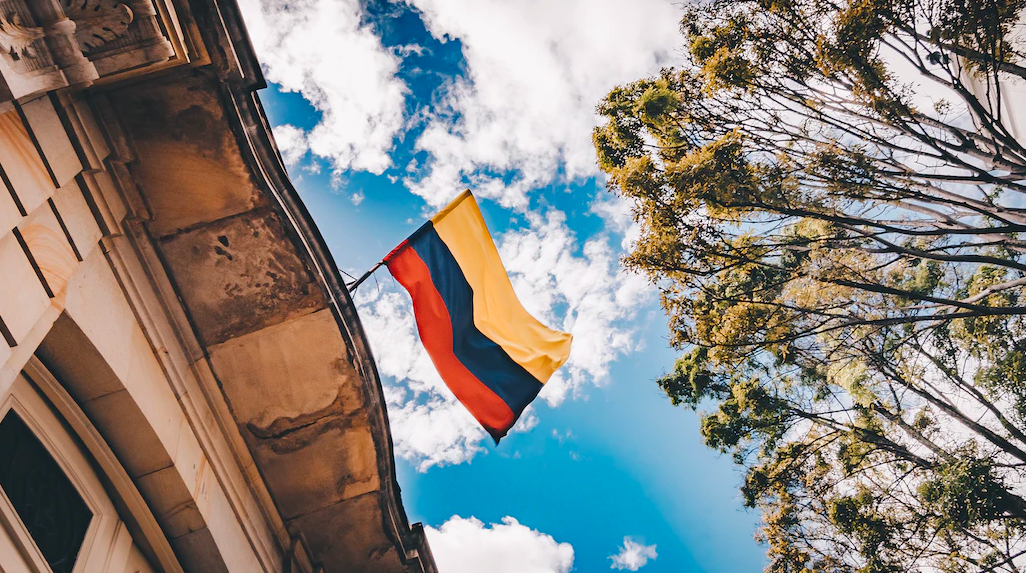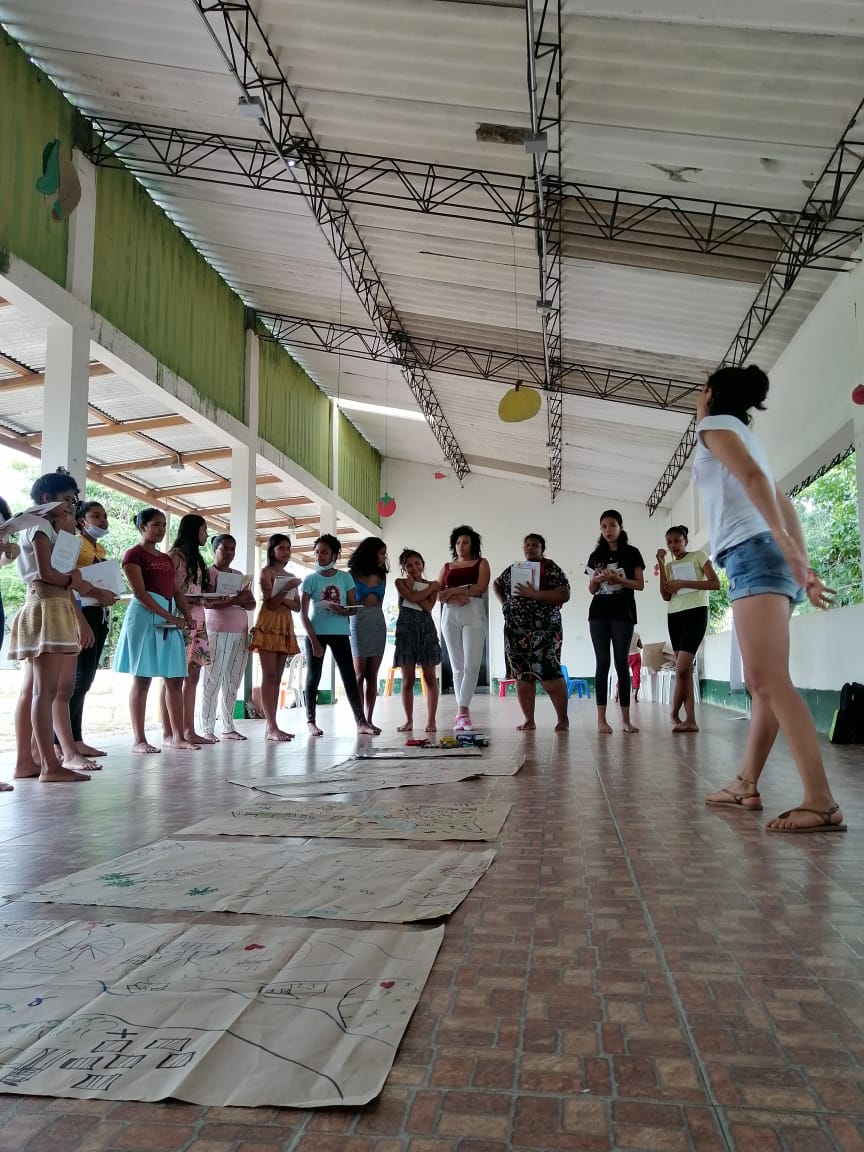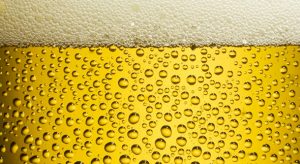 Colombia is a country that produces fantastic liquids. From soups and broths such as cazuela or ajíaco, through coffee and hot chocolate to avena, each liquid-based food or drink is a delight for the tastebuds. Alcohol is no different, featuring luscious aguardientes, rums and surprisingly good vodkas.
Colombia is a country that produces fantastic liquids. From soups and broths such as cazuela or ajíaco, through coffee and hot chocolate to avena, each liquid-based food or drink is a delight for the tastebuds. Alcohol is no different, featuring luscious aguardientes, rums and surprisingly good vodkas.
Now, beer’s joining the party. Of course, there have always been the nacionales, which are actually pretty good standard session lagers, but we are looking at cervezas artesanales, ‘craft beer’ in English.
To understand craft beer, we must first return to England, in the dawn of time (well, the late seventies at least). Lager had arrived in England, and was quickly becoming the regular drinker’s choice of tipple. Dismayed by this, a group of ale fanatics decided to form the Campaign for Real Ale, or CAMRA for short. The successes of this group led to a rebirth in small breweries throughout the UK and a veritable taste boom.
Not to be outdone, on the other side of the Atlantic, North Americans were beavering away at their own microbrewery explosion. They were and are much less sniffy about rules and loosely designated all well-made beer from smaller breweries as ‘craft’. Typical among these new world breweries were massively hopped beers, especially in their interpretation of India Pale Ale.
Now Bogotá is the latest city to be caught in this new wave of beer. Artesaneles take a number of different forms, but chief among the styles to be found in Colombia are ales. Nobody really knows what “craft” (or artisanal or micro-brewed) beer is exactly and if someone tries to tell you, they’re lying. There are a number of varying definitions from different brewing organisations/associations but what it comes down to is beer brewed in relatively small batches by independently owned breweries. These breweries can range from tiny one-person operations in a kitchen to fairly large, semi-industrial breweries. This contrasts greatly with the multinational mega-corporations that produce bottles that happen to be filled with beer which need to carefully watch their bottom line and appeal to the lowest common denominator with bland, tasteless, and colourless swill.
Craft beer brewers, however, are free to concoct pretty much whatever their customers are willing to drink. In North America, this has resulted in wild new styles of beer or the re-imagining of old ones, often pumped full of the strong hop varieties of the west coast of the continent. In the beer-drinking regions of Europe however, craft breweries are often reviving nearly forgotten regional styles, sometimes adding their own twist. In places where beer does not have deep roots (such as here in Colombia) craft breweries are trying new things for emerging markets with varying levels of success.
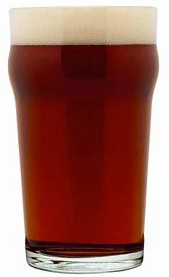 |
AlesAlthough lager is very popular, it’s the ales that are really thrilling in Bogotá. In the same way that all dogs are dogs despite having a seemingly infinite number of breeds, so ales have a tremendous variety under their umbrella. A Porter and a Mild, for example, are at once absolutely the same and utterly different. Unlike wine, beer has traditionally been a working person’s drink and therefore concentrates on flavour and innovation rather than poncey traditionalist elitism. A few craft beers now give pretentious tasting notes on their labels: ignore them. Just lay your head back and enjoy the assault on your mouth. Describe it as you feel it. Note that beer is often bitter, but never sour. A vinegary aftertaste is a (sadly common) sign that the beer is off, that is to say, stale. |
 |
Dark alesDark beers are far more common in Latin America than in other parts of the world. Rolos in particular seem to drink a hell of a lot of Porter (including Fuller’s London Porter, which I’ve never seen in London). This style is characterised by aromas of caramel, coffee chocolate. The flavours come from toasted malts, which are generally in higher concentrations than in darker beers. There are also a few stouts kicking about, which tend to be creamier, softer and more quaffable. Most drinkable of all are the Milds, designed to be drunk in great quantity. However, there appears to be none in Colombia, so I’m laying down a challenge here and now for someone to produce some. |
 |
Brown alesNext down on the colour chart we find dark brown ales. This band can include Amber Ales, Irish Red Ales (not something you’ll see much of outside Colombia, but they do like that name here), Best Bitters and English IPAs. As the hops and malts are balancing each other, bitterness is the main theme among these beers, but not too intense – what you may typically associate with ale. Indeed, these are by far the most traditional styles, and it’s still common in England to hear all ale referred to as ‘bitter’. Typically these beers have nutty, roasty and occasionally smoky characteristics. |
 |
Blonde alesFinally, just before the lagers are plenty of light beers. Don’t be fooled by the name though, they are light in colour only. These are almost exclusively blonde ales and American IPAs. A relatively new style, this is where the American breweries really come into their own. Ripping up the recipes, they hop the beer much further than other styles. This gives an exceedingly intense final flavour and an aggressive dry, hoppy, bitterness. Colombians have continued this spirit of innovation, and these styles are often more playful and creative than others. |
 |
LagersOf course, as a primarily lager-drinking nation, Colombia also boasts a fine selection of these Eurobeers. Belgian styles predominate, although there are a fair few dark lagers which impress in a cool climate such as that of Bogotá. Most of the breweries in Colombia dabble in styles such as Tripel or Marzens that pack a lot of flavour into incredibly strong beers. Keep an eye on some of their percentages. There are also a few of the fruit beers kicking about, and many breweries now offer a wheat beer. Personally, it just looks and tastes like grubby dishwater but it’s an interesting style to at least try. |
Where to drink: On tap
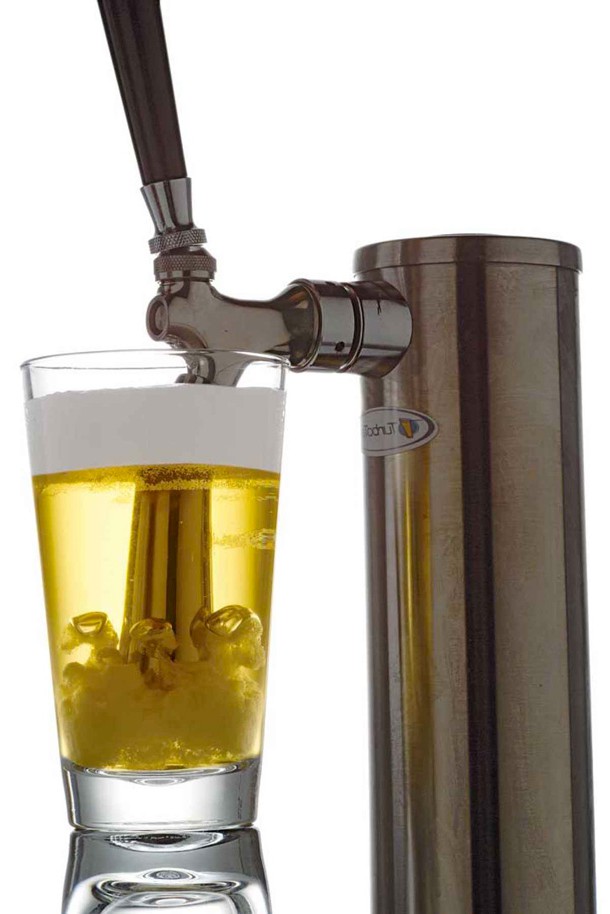 There are scores of places throughout Bogotá in which one can find quality beer, even if smaller brewers are thin on the ground
There are scores of places throughout Bogotá in which one can find quality beer, even if smaller brewers are thin on the ground
The widest selection of craft beer in town is to be found at the Monkey House, who pride themselves on bringing the concept of gastropubs to the city, (Calle 70A # 8-55 and Calle 119B # 6-21), with 15 draft taps and six local craft breweries represented across the two bars, and over 126 bottled beers in stock from around the world. The most popular choice is no doubt the BBC and the BBC Bodegas, with dozens of locations citywide. BBC ales can also be found in a slightly different environment replete with decor all the way from Ireland at The Pub locations (Carrera 3 # 12-37; Carrera 12A No 83-48; Carrera 6A No. 117-45).
One issue that is common in nascent beer markets is the dispensing of beer at bars. Lines must be kept clean, kegs chilled, and pressure must be just right. Bartenders should be trained on how to pour that perfect pint. If your beer comes to the table with more head than beer, you can rest assured that your “bartender” has no idea how to pour.
Due to the incredibly byzantine zoning and regulatory hurdles one must navigate, brewpubs (bars where beer is brewed on site) are pretty well non-existent here in Bogotá. While a few can be found in smaller towns in touristy parts of Colombia, only one exists in the Capital and the quality of its beer is so bad that this is the last we will speak of it. However, a German restaurant by the name of Edelweiss in Cajicá makes uninspiring but technically excellent dark and blond beers on site, which compliment their authentic German fare quite nicely.
Chelarte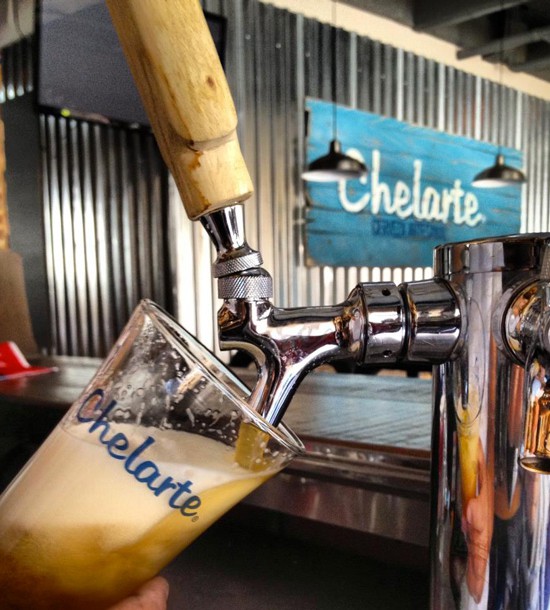 has its own bar near Parque 93 (Carrera 14 #93b-45) where you can get all their beers plus seasonal brews on tap. The pub has a distinctly west coast USA feel, much like their very hoppy beers and also serves up excellent tucker. In Chapinero, by the two trees, stands Statua Rota (Calle 54 #6-23) and its constantly rotating house beers and guest ales. They’ll happily serve up samplers – but be aware that some of our readers have complained of feeling sick after drinking here. Out towards the airport, in the shadow of the Marriot, there is The Britannia (Calle 26 #69b-45/53). Run by affable Welshman Alex Owen, this pub is known for its Manigua (formally Los Andes) lines.
has its own bar near Parque 93 (Carrera 14 #93b-45) where you can get all their beers plus seasonal brews on tap. The pub has a distinctly west coast USA feel, much like their very hoppy beers and also serves up excellent tucker. In Chapinero, by the two trees, stands Statua Rota (Calle 54 #6-23) and its constantly rotating house beers and guest ales. They’ll happily serve up samplers – but be aware that some of our readers have complained of feeling sick after drinking here. Out towards the airport, in the shadow of the Marriot, there is The Britannia (Calle 26 #69b-45/53). Run by affable Welshman Alex Owen, this pub is known for its Manigua (formally Los Andes) lines.
Venture way up north to Casa Cervecera (Carrera 19 #147- 60), and you’ll find Bogotá-brewed Tres Marias on tap. At first glance, this bar, adjacent to a generic Irish pub, looks like any other pub with its over the top decor but actually has quite a nice atmosphere and friendly staff.
Since opening a brewpub is so incredibly difficult here and local bars are notorious for not giving craft brews their due respect, we can expect more small breweries to open their own watering holes in the near future. Expect bars from Experience Beer Lab in Cedritos as well as another small brewery (that cannot be named at the moment) in Chapinero in the near future. Draft (Calle 127 #7D-11) is a sleek but not particularly inspiring bar featuring self-serve taps with both 3 Cordilleras and Bavaria beers.
Pub landlords
While many Bogotano craft beer bars have imitated the decor and atmosphere of a pub – some may argue to their detriment as they lack the Colombian feel of a tienda – there are surprisingly few publicans.
Most places in the city are operated by staff that care little about the beer they serve. Of course, in most places that’s not a problem, as they simply have to take the tops off bottles. However, fresh beer requires a lot more knowledge and care, especially as these bars are the vanguard of introducing craft beers to a new public.
Britannia owner/publican Alex Owen explains to us that, “A good publican has to be personable, firstly, because you’re the face of the business”.
“But that’s only the start. You need to know the product, understand the beers you’re serving. I spend countless hours checking things and making sure everything’s perfect.”
“As a publican, you have to know what’s going on. If the beer is poor, it’s your responsibility to take the barrel off service. If you don’t do that, you’re letting the customers down and ruining their drinking experience”, he adds.
If you want to buy microbrews to enjoy at home, well, good luck. Most major supermarket chains have a couple of the bigger brands but not much else. Otherwise, just contact the brewery directly and drop by. Many breweries do direct sales and some will even sell you a keg for events. Bottoms up!
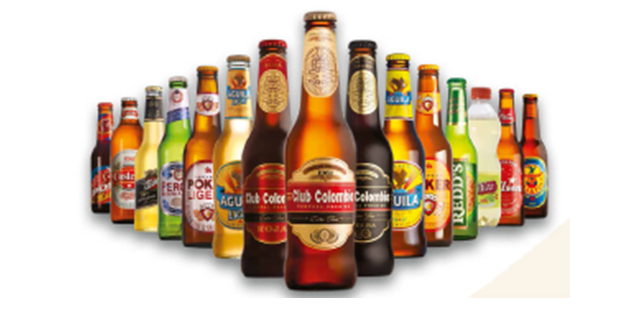
All made by the same company, all profits go overseas.
What to drink
Colombia loves its monopolies and beer is no exception, as Bavaria controls a whopping 98% of the market. A few foreign imports such as Heineken, Grolsch and, lamentably, the American giants Budweiser and Miller also exist. However, in that 2% are a diffuse group of brewers, the comparative giants of BBC and 3 Cordilleras, plus a flowering bunch of microbreweries. Below we list some of the best craft beers in Bogotá (and a couple of also-rans). Interestingly, although Bavaria like to market their German beer as intrinsically Colombian in a variety of sexist publicity, all their money ends up in the hands of InBev. Spending your money on any of the list below means the money stays in Colombia and supports creative, innovative local businesses.
Beer Experience Lab (Best technical beer)
They claim to make “molecular beer” although we’re not entirely sure what this means. Good beer, notable for being one of the only small breweries in the city with a well designed label.
Their Negré has a strong caramel aroma, with some burnt toasty flavours on the aftertaste.
 Yggdrasil (Best for new flavours)
Yggdrasil (Best for new flavours)
Named for the ancient tree of life in Norse mythology, this Palermo-based brewer is experimenting with adding different flavours such as grapes and berries.
We sampled the grape beer, and it proved an excellent session beer, with a pleasingly citric tang. The initial taste isn’t obvious, but as you drink more the beer really grows on you.
Manigua (Best IPA)
The new name for the Los Andes brewery, Manigua has two key beers, Rifle and Sierra Del Tigre. Rifle can be hit and miss, though superb when on form; Sierra Del Tigre is probably the best beer outright in Bogotá. It’s certainly the best English IPA, and incredibly drinkable with a pleasingly bitter aftertaste.
3 Cárites (Best for American styles)
This brewery makes an excellent APA and blonde ale in the newer, west-coast tradition of hoppy American microbreweries. The stout is good, but lacking somewhat in body.
Chelarte (Best for variety)
One of the biggest true microbreweries in Bogotá, Chelarte feature their own bar. All the beers are named after women and the label art is distinctly West Coast in style.
The darker beers are poor, far too light, but the lighter offerings are superb if somewhat sweet. One of the few breweries doing true west coast IPAs with full hop flavour. Some of The Bogotá Post team swear that Raquel is the best beer in the city.
Serpens (Best for going hop-crazy)
Based in Fontíbon, Serpens has been going for only nine months. Founded by a group of chemical engineers, their beer flows as easily down the throat as the serpents from which they take their name.
The Amber Ale was fairly sour, however the Tripel was superb, filled to bursting with hops, neatly complemented by a judicious use of ginger.
La Pola Cervecería (Best amber ale)
Newbies to the scene, these upstarts currently have a very drinkable Amber Ale. A little thin maybe, but mightily maltily flavourful.
Colón (Best for giggles)
An apt name, if you lose the accent.
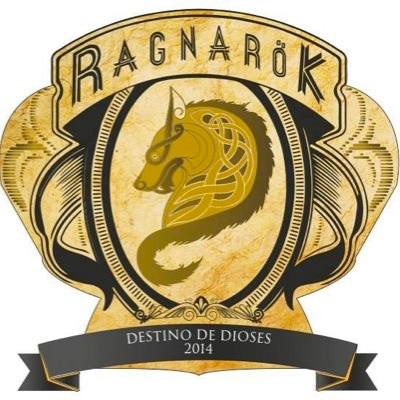 Ragnarok (Best for traditional styles)
Ragnarok (Best for traditional styles)
Viking in name but calm in nature, the crew of brewship Ragnarok come out of the setting sun (well, Fontíbon) with basic, but well-done, beers. There’s no mucking about here, but instead a focus on high quality beer across the board.
The Imperial Stout is full-bodied and packs a punch. A really thick beer, with tonnes of flavour and a mouth-filling viscosity.
Tres Cordilleras (Best big brewery)
The biggest of the true craft brewers, Tres Cordilleras is based in Medellín although you can find plenty of stockists here in Bogotá, including a lot of mid-sized supermarkets. They have a fairly standard colour range. Although their lighter beers can be unpredictable, the Mulata and Negra are both cracking, full of flavour and intensity.
BBC (Best for all round availability)
The biggest small brewer in Colombia, the BBC cranks out thousands of litres and can be found throughout the city. Some people may dismiss them as not being craft brewers, but they are extremely popular and have certainly blazed a trail for draft beers, introducing non-lagers to many in the country. They’re pretty consistent for their size and all of their beers function as session beers, even if the Septimazo might get you bladdered pretty fast. Chapinero Porter is the classic, and it’s easy to get through four or five without thinking about it.
 Apóstol (Best for European styles)
Apóstol (Best for European styles)
With a range of very good Teutonic lagers, the Antoquia-based brewery says it uses German technology to produce high-quality, award-winning, Colombian beer. Some people criticise them for being unimaginative, but it’s certainly true that what they do, they do very well, and is there any need to reinvent the wheel? After all, it’s still a lot better than most of the competition. Dubbel is top quality, with an almost port-like thick viscosity. Marzen is also always excellent.
By Oli Pritchard & Chris Erb



